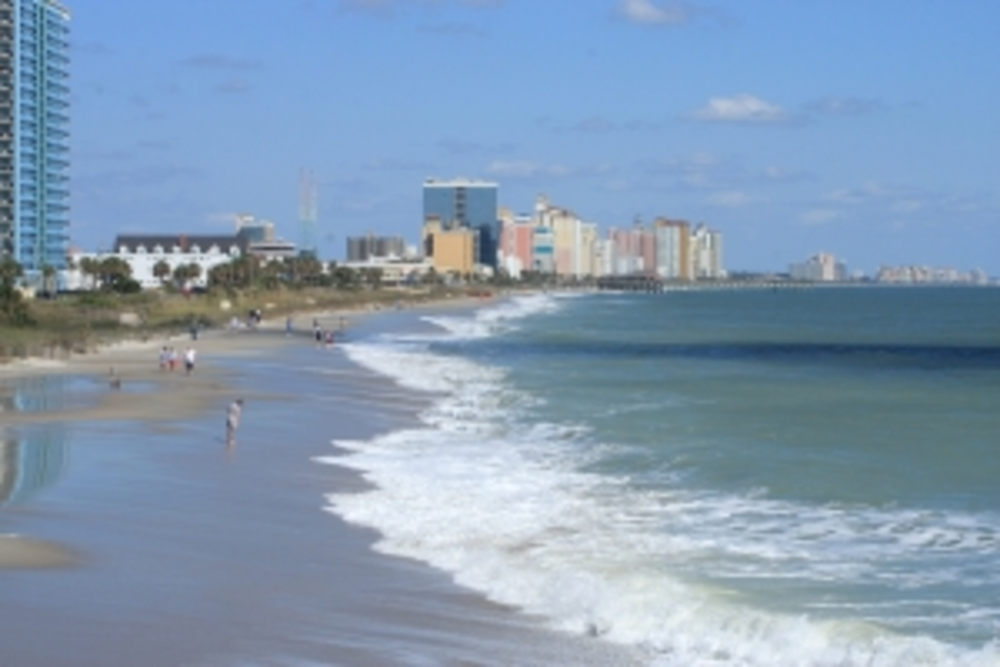Many consumers have come to expect a degree of personalization in digital marketing. Rarely, however, are those personalized communications via video, which is often viral and effective.
This wasn’t the case for the Myrtle Beach Convention and Visitors Bureau (CVB), which is dedicated to driving tourists to the South Carolina coast—also known as the Grand Strand. The marketers at the CVB’s Visit Myrtle Beach website know the value of video in the destination vertical, and also recognized the benefits of personalized, relevant marketing. The organization decided to marry the two; it chose Eyeview, a personalized video advertising solutions provider, to support its new marketing efforts.
The challenge
Visit Myrtle Beach aimed to promote the area as the perfect spring getaway. But to stand out from other destinations’ marketing, the organization planned to highlight specific attractions and promotions based on targeted customers’ behavioral, demographic, and geographic data.
Scott Schult, EVP of marketing at Visit Myrtle Beach, saw the potential in using customer data to tailor video messaging, with the added goal of tracking the videos’ performance in a given segment. Eyeview’s dynamic video personalization engine proved instrumental in realizing this goal.
“The best way to sell a destination is through video and we’ve cultivated several types of video assets to that end,” Schult says. “Eyeview gave us the ability to customize video text and creative to be more relevant to the segments we’re targeting.”
The execution
“We started [the campaign] during the winter season to drive demand to the Myrtle Beach area,” Schult says. A significant portion of Myrtle Beach tourists hail from the Midwest and North Eastern regions—areas especially affected by the fierce longevity of the winter months. So, Visit Myrtle Beach crafted an original video featuring sunshine, smiling faces, people in shorts, and myriad Myrtle Beach attractions. The organization then sent the video asset to Eyeview for personalization.
Visit Myrtle Beach used data to segment potential tourists based on demographics, location, and even weather. Based on those segments, Eyeview’s technology rendered more than 400 variants of Visit Myrtle Beach’s video. “Each ad is a video ad in its own right. There’s no Flash overlay tech involved,” says Erik Schear, executive director of sales at Eyeview.
For this campaign in particular, a brief message was added toward the end of the video. The message changed depending on the location of the user, as well as the name of the nearest airline with a non-stop fight to Myrtle Beach. The videos ran in-stream as pre-roll ads. Creative was also customized depending on the customer segment, with golfers served different content than families or couples, for instance.
Using programmatic ad buying, Eyeview bought pre-roll ad spots on various websites prospective Myrtle Beach tourists patronized, says Amit Mashiah, SVP of marketing at Eyeview. “[Our focus] is…post-impression activity. How many people viewed the ad and visited site? How many leads did the ad generate? How many led to sales?”
The results
The personalized video campaign performed like a ray of sunshine in heating up interest in the area. The videos generated more than 45,000 clicks to VisitMyrtleBeach.com, and had a 28% click-through rate to Visit Myrtle Beach advertisers’ sites—better metrics than any of the company’s other display efforts.
“When I started in this capacity digital advertising was only about 10% [of our marketing],” Schult says. “Now [digital] is closer to 70% and our TV budget decreased by 20% in 2014 to move those assets to digital video [where] we can target and measure more effectively.” In fact, Visit Myrtle Beach recently completed another campaign with Eyeview, with yet another slated for this summer.
Embolded by the success of the campaign, Schult plans to venture further into video through social. “We’ve already started working on social videos that are shorter and themed around how to travel like a local, and things like that,” Schult says. “If a picture is worth a thousand words, you have to wonder what a video is worth.”








